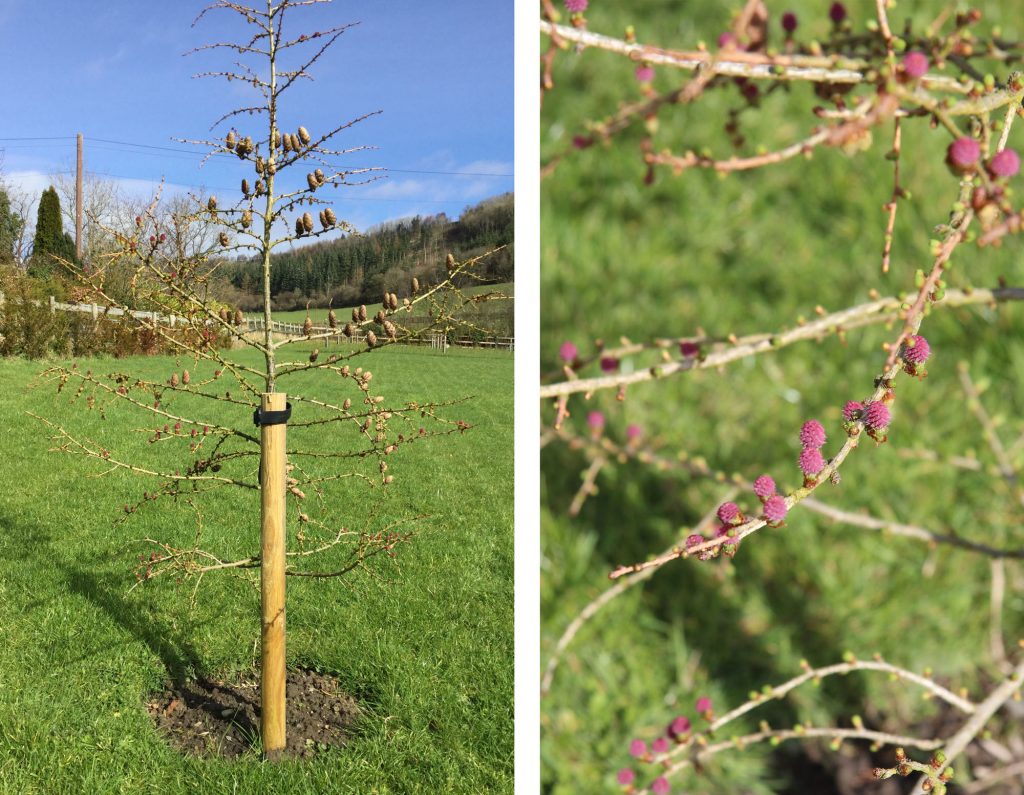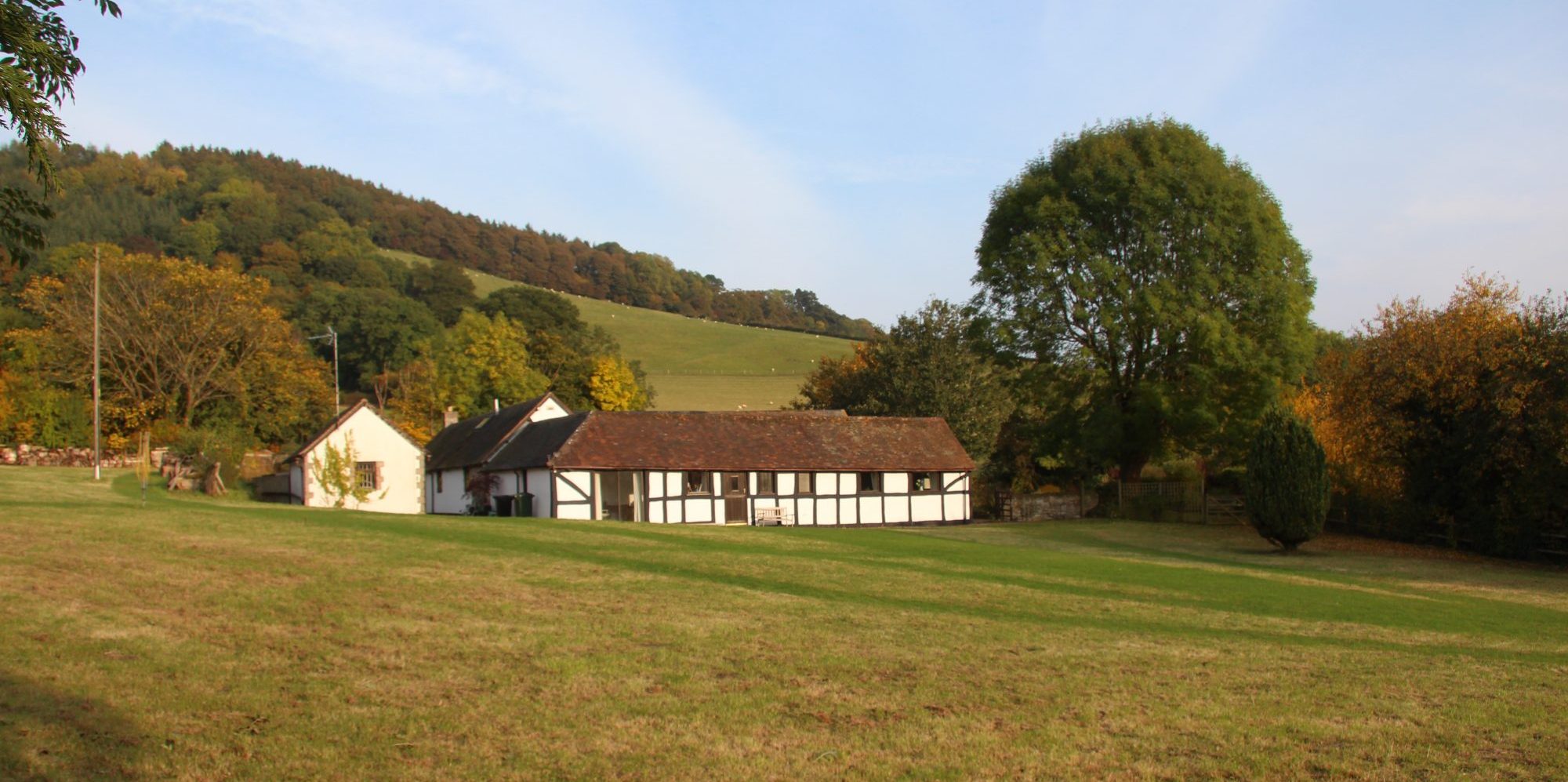The garden changes so quickly – and dramatically – in early spring. I should have posted this blog when the trees were festooned with catkins and blossom, but somehow the weeks have gone by and the garden has moved on. However, I have the photos I took in March, so here goes.
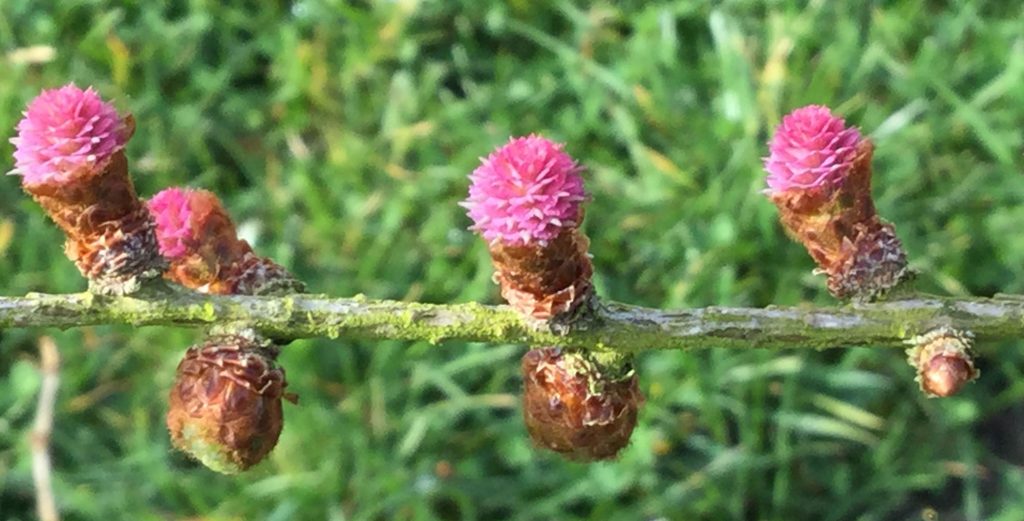
First a puzzle. On what plant are these curiously vivid pink flowers? I was quite amazed to see them very early in the year and in such profusion on one of the trees we had planted. But which one? The blossom on the almond tree was much more as expected, pale pink flowers typical of a fruit‑tree; it too was one of the very first to bloom, perhaps brought on by the exceptionally warm weather in parts of February and March. Writing this in April, I can say that I can’t yet see any sign of the fruit (almonds) forming – were the flowers too early for its pollinators?
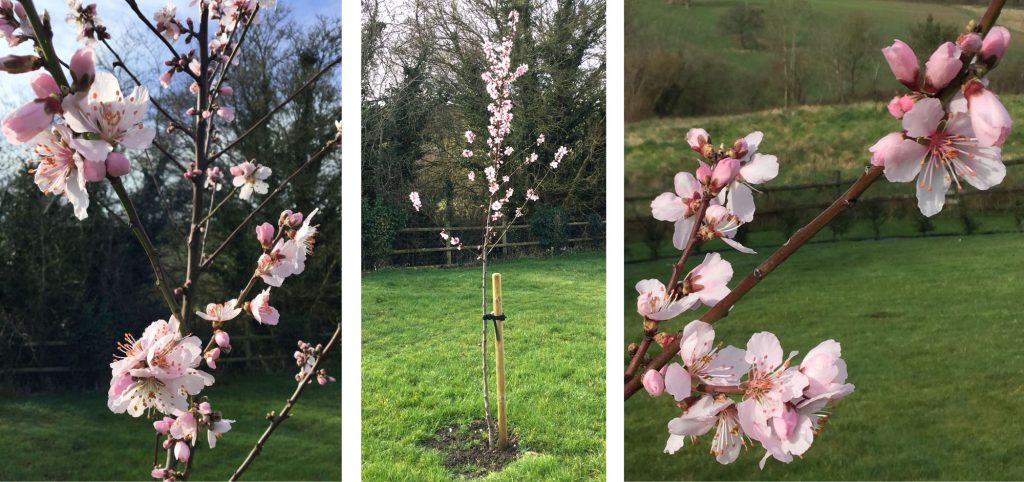
Each of the different types of willow we planted in our willow hedge (I realise I haven’t blogged about the hedging yet) had slender catkins, some very small, others a few centimetres long, most pale‑green but some with a reddish hue. The mature hazels in the established native hedging along our southern boundary had plenty of long catkins; I assume that last autumn they had had plenty of hazelnuts too, as the squirrels have been busy digging up those they had buried in the grass – lots of them (squirrels and nuts) – always discarding the empty shells next to the hole by way of explaining to us why the hole was necessary.
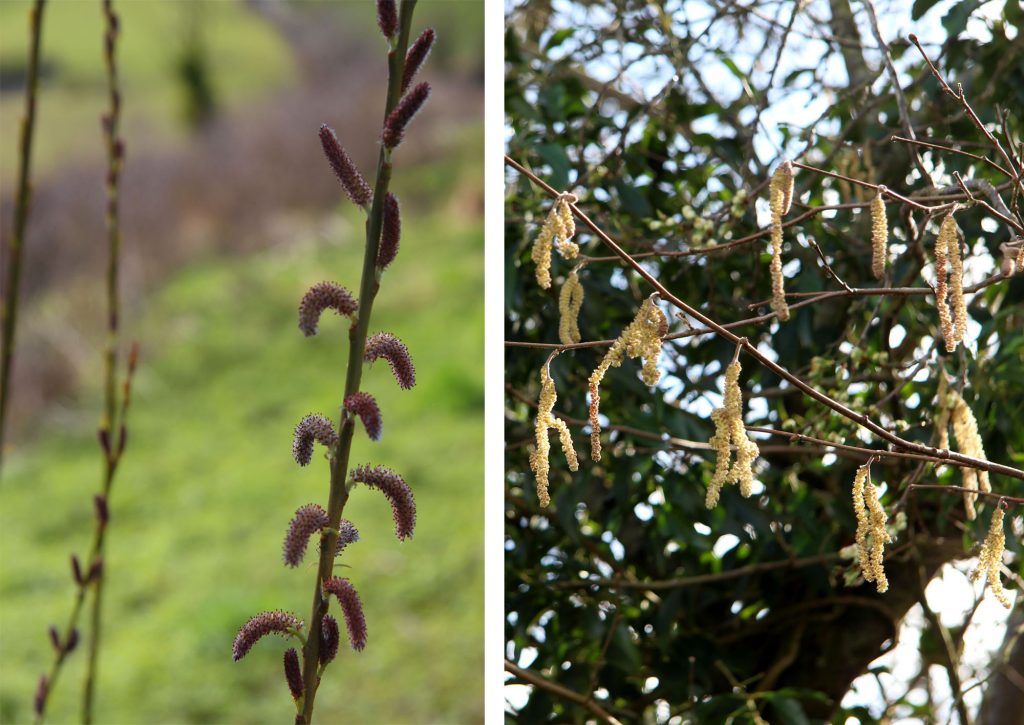
In the rather unkempt bank between the back of the house and the orchard, there is a self-set pussy‑willow which had lots of bushy catkins, beautifully soft and furry, equally delightful when caught by the sunlight or electric light indoors.
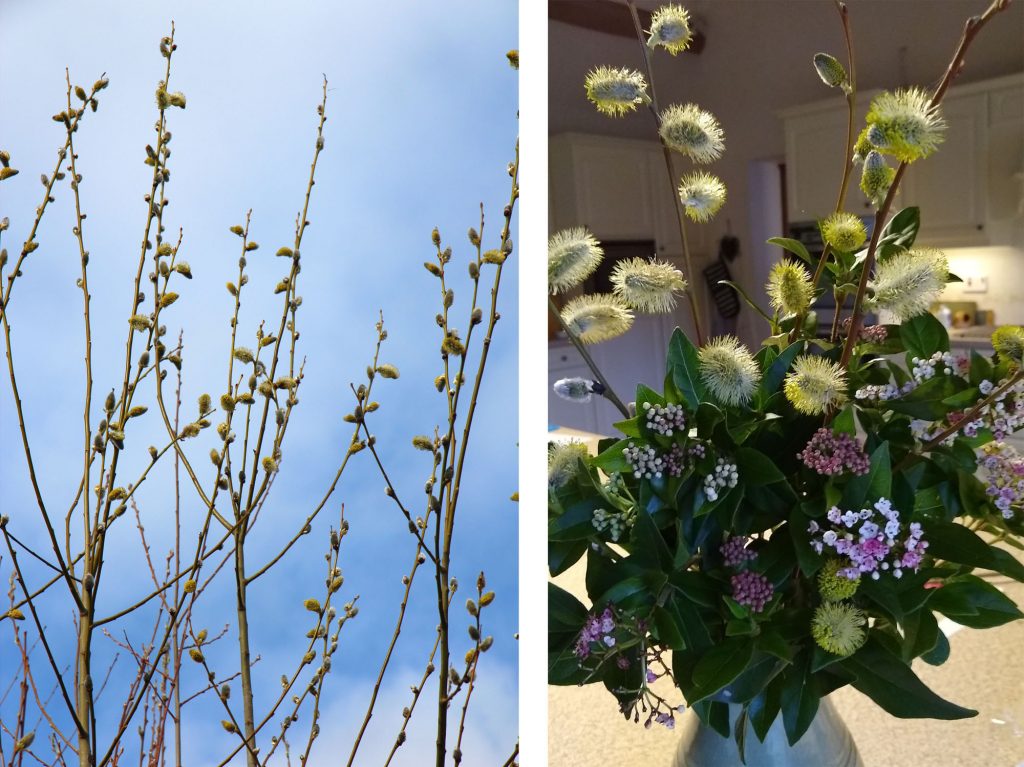
But what of the curious vivid pink flowers? Well they belong to the Japanese Larch. I now know that the pink flowers – and they were vivid pink – are the female flowers, the male flowers are the yellowy‑brown blobs hanging down from the branches. If the pink flowers have been pollinated (by insects of some sort?) I assume they will develop into cones. We shall wait and see.
